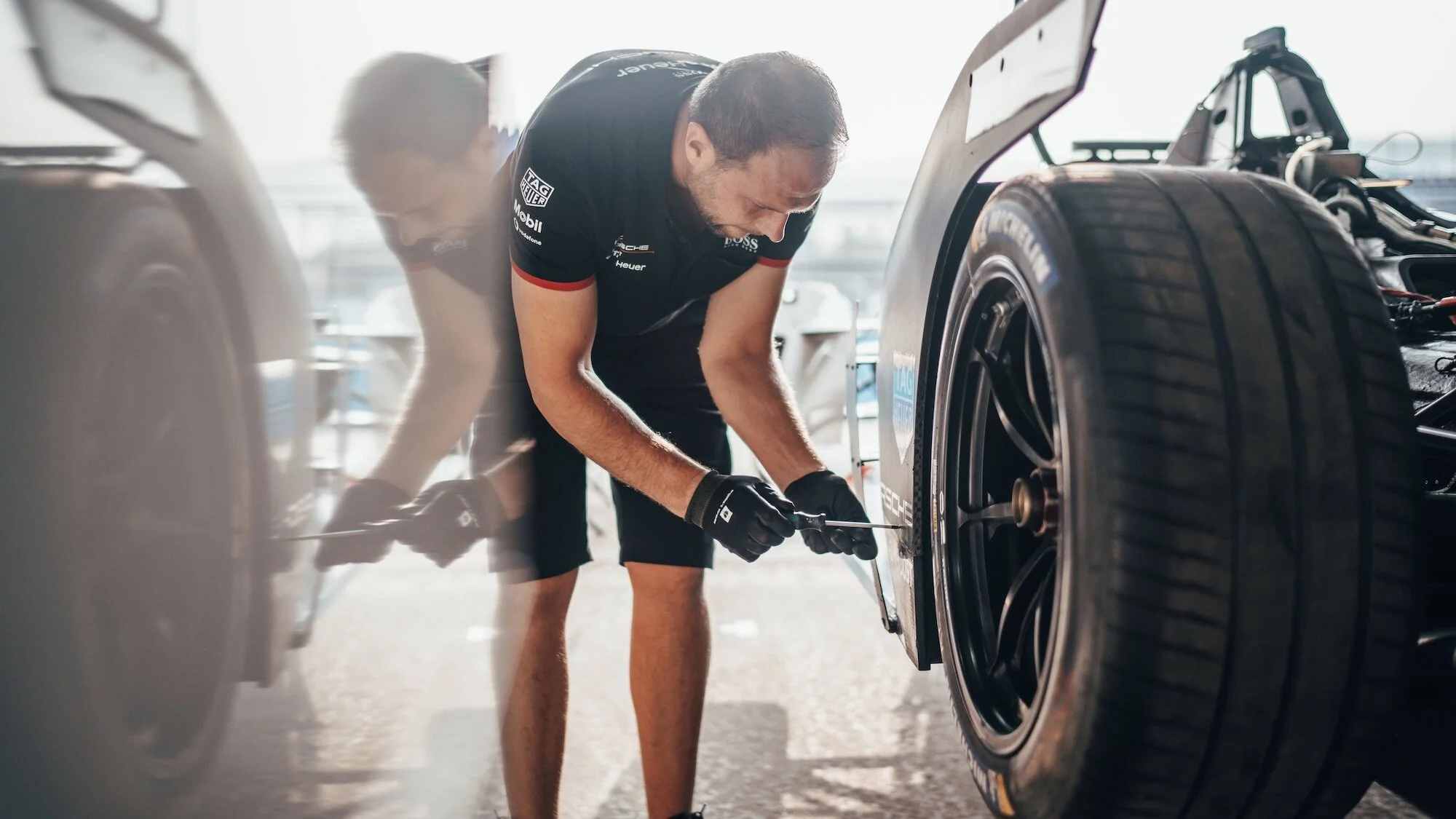How Porsche is overcoming logistical challenges at the Formula E finale
In the ‘Challenge Berlin’ series, team members offer fascinating insights into their preparations for the season finale of the ABB FIA Formula E Championship in Berlin. Over the course of three episodes, they explain the logistical, technical and driving challenges. In part one, Amiel Lindesay, Head of Operations Formula E, reveals the key aspects when it comes to organisation and logistics.
After roughly five months without racing, the ABB FIA Formula E Championship returns from 5th to 13th August with the big season finale in Berlin. The TAG Heuer Porsche Formula E Team has an extraordinarily packed programme ahead of it with six races in nine days. There is great anticipation among the whole team ahead of the return to the racetrack. “The unusual situation means there will be a few compromises, but we are looking forward to finally going racing again,” said Lindesay. The Formula E safety measures are comprehensive and demand precise organisation. That goes for both the equipment and the personnel planning. The peculiar circumstances demand innovative solutions in many areas.
Safety comes first
The Formula E safety measures plan for the season finale in Berlin is a comprehensive one. The team has used the race-free period to prepare meticulously for the different conditions. “As well as the Formula E safety measures, we also have internal guidelines, which we have been able to test in recent weeks to ensure we are well prepared when we travel to Berlin,” said Lindesay. Wearing masks and maintaining the minimum distance to people is not enough. Team members on site must comply with many other regulations.
Formula E personnel and the individual teams work in the so-called ‘bubble’ system. Once they arrive in Berlin, each member must undergo a coronavirus test in the team hotel, after which they must go into quarantine – until they have a negative result. The team members then travel to the racetrack in dedicated groups. The circuit itself is divided into different zones. That ensures that the individual groups stay in defined zones and there is as little contact as possible between the groups. Outside the racetrack and the hotel, no contact is permitted.
Many small things can make a big difference. For example, so-called ‘break-out rooms’ will be erected for lunch and dinner, in which team members will be served their meals at a distance. “It will be a challenge to us all to adapt to the new circumstances, whilst at the same time remaining focussed on the job at hand. However, I am confident that we will cope well,” said Lindesay.
More races demand precise planning
Compared to previous one-day events, the number of Formula E races within a matter of days is probably the greatest difference. Lindesay said “We must take far more spare parts with us for the six race days than we would usually.” Nothing is being left to chance, especially as the restrictions at the racetrack also affect logistics.
The Porsche 99X Electric and the associated equipment are transported to Berlin by freight, but the additional internal spare parts for the six races can only be delivered in a one-off delivery at the start of August. “You have to think ahead and plan for different scenarios. As we can only accept spare parts once, we have to factor in all possible eventualities,” said the New Zealander. There too, the ‘bubble’ system comes into play. The equipment is transported carefully and largely contact-free from zone to zone, before it ultimately arrives at the TAG Heuer Porsche Formula E Team.
Operational and virtual personnel planning
Another peculiarity in Berlin is the limited number of team members on site. For safety reasons, Formula E regulations permit a maximum of 20 members per team at the finale. As well as the mechanics, the race engineers are also on site – all those who are essential in Berlin from an operational perspective. “We have set ourselves up differently as a team, but at the end of the day everyone is doing their job – regardless of whether that is at the racetrack or at home.”
It will obviously take a certain amount of time for everyone to get used to the new virtual tools and the limited personal contact. Lindesay is confident that the team will adapt quickly and cope well however. “We have tested this scenario several times recently, which has given us the opportunity to make our workflows even more efficient. That has worked very well so far.” The processes will continue to be fine-tuned between now and the opening race in Berlin.
Races behind closed doors
The restrictions regarding everyday work may pose a challenge to the TAG Heuer Porsche Formula E Team, but they have done their homework. The only thing the crew will be missing is the spectators, as Lindesay confirmed. “It is obviously a great shame that there will be no spectators there but these measures are necessary for the races to take place at all.” On the whole, however, the positive aspects outweigh the negative. After all, the forthcoming six races form the conclusion to the current Formula E season. This marks the end of the debut season for Porsche. The team’s goal remains the same: to gain valuable experience in the rookie season and to end the season with more points and podium finishes – whilst maintaining maximum safety, of course.



